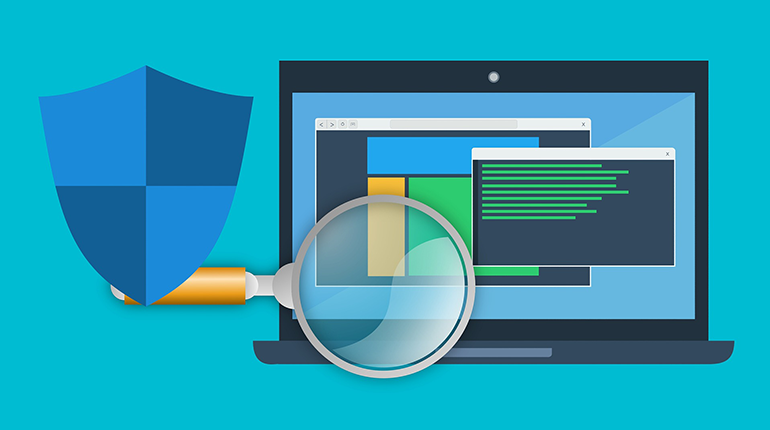Modern attackers are sophisticated and well-organized. They are continually finding new ways to attack businesses and organizations. Therefore, it is essential for companies to employ the latest tools and technologies to protect their systems and data. An external vulnerability scan is one valuable tool in this arsenal. In this blog, we will discuss what an external vulnerability scan is and its importance in safeguarding a company’s information.
What is an external vulnerability scan and the reasons is it important for businesses to conduct them regularly
External vulnerability scans are important for businesses to conduct regularly to identify security weaknesses. Conduct these scans manually or with the help of automated tools, and they typically involve looking at a company’s public-facing infrastructure, such as web servers and email servers. By identifying vulnerable systems and then patching them, businesses can reduce their risk of a compromise. Additionally, external vulnerability scans can help businesses to meet compliance requirements, such as those set by the Payment Card Industry (PCI). External vulnerability scans are an important part of any security program. Businesses should make sure to conduct them regularly.
Benefits of Conducting Regular External Vulnerability Scans:
External vulnerability scans are an important part of any security program. There are several key benefits to conducting regular external vulnerability scans, including:
1. Identifying Vulnerabilities
External vulnerability scans can help businesses to identify security weaknesses and then patch them, reducing their risk of an attack.
2. Compliance
External vulnerability scans can also help businesses to ensure they are meeting any necessary compliance requirements, such as those set by the Payment Card Industry (PCI).
3. Preventing Breaches
By identifying and fixing security weaknesses before attackers can exploit them, external vulnerability scans can help to prevent costly data breaches.
4. Cost Savings
Conducting regular external vulnerability scans can help businesses save money overall by preventing costly data breaches and helping them meet compliance standards more easily.
How often should a business conduct external vulnerability scans
Conduct external vulnerability scans at least quarterly, and more frequently if the business has experienced any changes that could affect its security posture. These changes could include the addition of new systems or applications, a change in network architecture, or storing and processing of more sensitive data. Additionally, you should conduct external vulnerability scans anytime there is a notable change in staff, such as the departure of a key personnel member or the addition of a new employee with access to critical systems. By conducting regular scans, businesses can ensure that they are aware of any potential vulnerabilities and take steps to mitigate them before hackers can exploit them.
What are some of the most common vulnerabilities can a scan find?
When conducting a scan of a system, it may identify several potential vulnerabilities. Common vulnerabilities include weak passwords, unpatched software, and open ports. In many cases, these hackers can exploit these vulnerabilities to gain access to the system or sensitive data. As such, it is important to take measures to remediate these vulnerabilities as soon as possible. By taking steps to secure systems and limit exposure, businesses can help to protect their data and reduce the risk of a successful attack.
Steps businesses can take to remediate any vulnerabilities discovered during a scan
Businesses should consider themselves lucky if they find out about their vulnerabilities only through a security scan. Here are some steps businesses can take to remediate any vulnerabilities discovered during a scan:
1. Implement Strong Password Policies
Businesses need to have strong password policies in place to ensure that user accounts are secure. This includes setting minimum length requirements, disabling weak passwords, and enforcing regular changes.
2. Update Software & System Patches
Apply any software or system patches promptly to minimize the risk of exploitation. Additionally, keep software and operating system components up to date with the latest security patches.
3. Limit Access & Monitor Activity
Limiting access to sensitive data and systems can help reduce the risk of unauthorized access or exploitation. Additionally, businesses should monitor any activity on their systems for suspicious or anomalous activity that could indicate a security breach.
4. Conduct Regular Vulnerability Scans
As mentioned previously, businesses should conduct regular external vulnerability scans to identify and patch any security weaknesses before hackers can exploit them.
Conclusion
External vulnerability scans are an important part of business security. By regularly conducting these scans, businesses can identify and remediate any vulnerabilities that may exist on their networks. The benefits of doing so include increased security, protection from cyber-attacks, and peace of mind. While no scan is 100% accurate, by following the tips in this post, businesses can maximize the effectiveness of their external vulnerability scans and improve the security of their networks. Have you conducted a vulnerability scan recently? If not, what is holding you back? We are here to help – contact us today for a security assessment and to learn more about how an external vulnerability scan can benefit your business.

